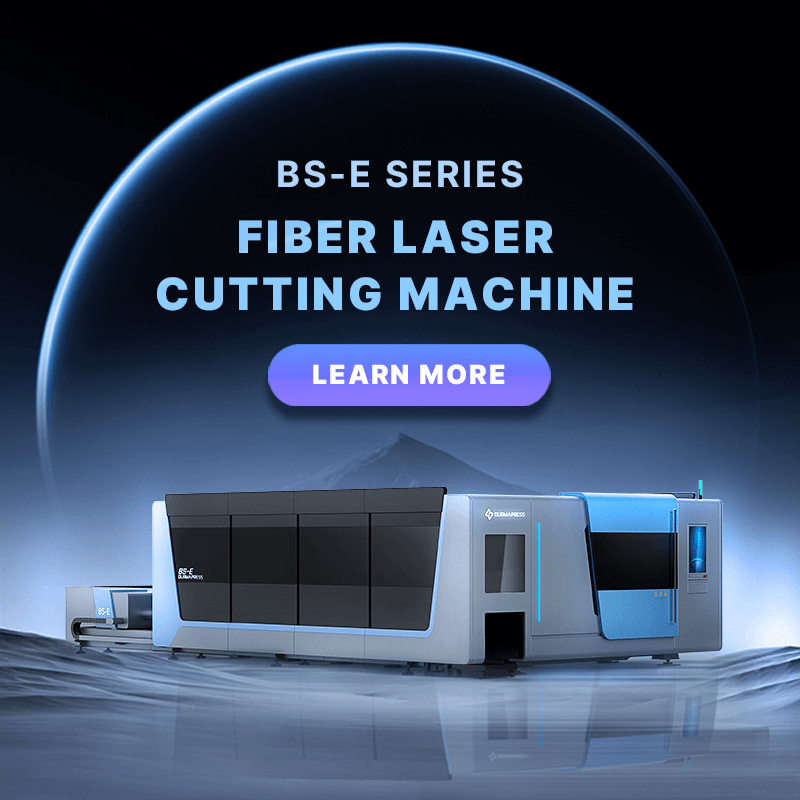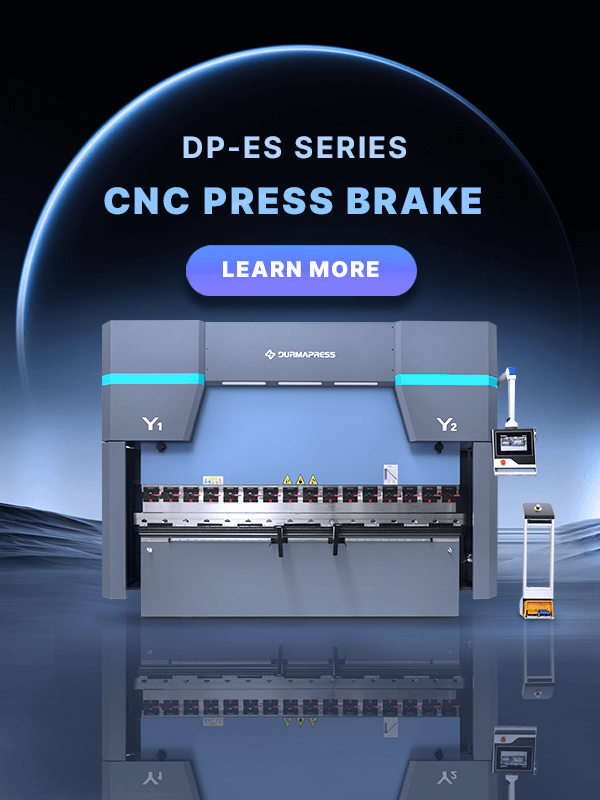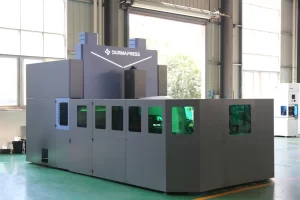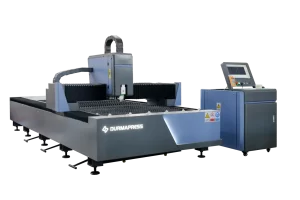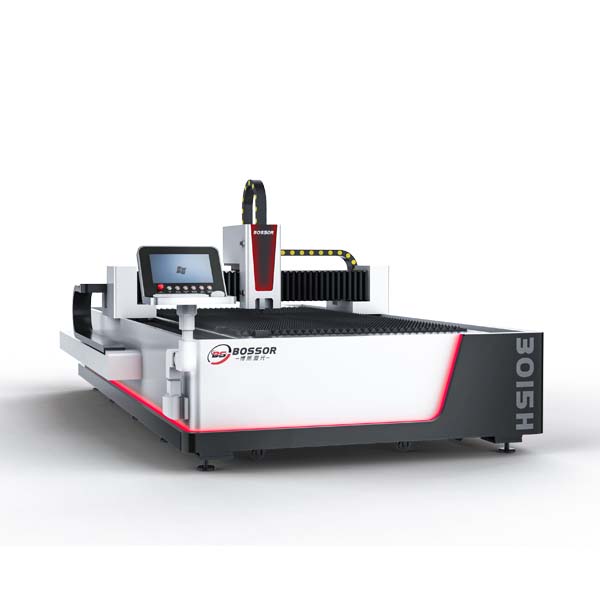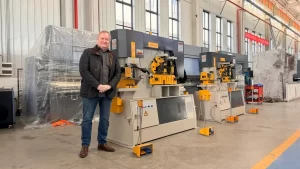
Medium and thick plates are widely used in various fields as load-bearing parts, such as engineering machinery and locomotives such as bulldozers, excavators, loaders and railway passenger cars. Usually, the medium and thick plates we refer to are metal plates with a thickness of 4.5~25mm. At present, the forming methods of medium and thick plates mainly include: bending forming by bending machines, rolling forming by rolling machines and forming by press molds. Among them, bending forming is the forming method with the widest application and richest product lines of medium and thick plates. The difficulties of bending medium and thick plates are long workpieces, high pressure, high forming difficulty, low efficiency and difficult to control precision. The final result of bending forming is a comprehensive reflection of conditions such as material parameters, process parameters and mold parameters. Reasonable design of these parameters is the key to improving the bending forming performance of medium and thick plates.
This article will introduce WILA's efficient solutions in the process of bending medium and thick plates from several aspects, such as heavy-duty upper hydraulic clamps, heavy-duty mechanical compensation workbenches, heavy-duty bending molds and efficient mold stations involved in the bending of medium and thick plates.
Selection of bending tonnage
The first problem faced in bending medium and thick plates is the selection of the tonnage of the bending machine and whether the bearing capacity of the fixture and mold meets the requirements. Figure 1 is a schematic diagram of conventional bending forming. The bending machine applies force F to drive the mutual movement between the upper and lower molds to bend the plate. For bending 90° carbon steel plates, WILA gives the empirical value of the plate load, as shown in Table 1. When the carbon steel thickness is 20mm, a lower mold with V=160mm can be selected, and the bending machine load at this time is 150t/m.
F=force per unit length (t/m); S=material thickness (mm); ri=bending inner fillet radius (mm); V=lower die opening size (mm); B=shortest flange edge (mm); aluminum: F×50%; aluminum alloy: F×100%; stainless steel: F×150%; stamping bending: F×(3~5);
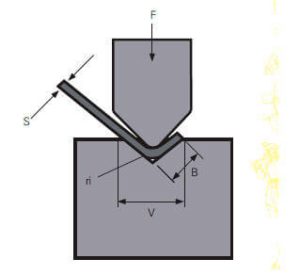
Heavy duty upper hydraulic clamp
For the bending of medium and thick plates, WILA's new standard high-end heavy-duty upper hydraulic clamp can easily handle it. The model is NSCL-HD-II-HC/UPB, and its appearance and dimensions are shown in the figure below.

The load-bearing modes of WILA heavy-duty upper hydraulic clamp include top load and shoulder load, and the maximum loads are 250t/m and 800t/m respectively. It can be seen from the medium and thick plate bending tonnage table that this heavy-duty clamp can fully meet the tonnage requirements of bending medium and thick plates. The force-bearing surface of the clamp adopts CNC deep quenching hardening technology, with a Rockwell hardness of 56~60HRC and a hardening depth of up to 4mm, which has high hardness and strong wear resistance. The surface accuracy of this heavy-duty upper hydraulic clamp can reach ±0.01mm, and even medium and thick plates can be bent accurately. Hydraulic quick clamping is adopted, and the expansion of the hydraulic hose drives the movement of the clamping pin, so that the mold is automatically seated and the bending line is automatically centered. For a bending mold with a total length of 6 meters, it only takes about 5 seconds to fully clamp the hydraulic clamp, and the comprehensive use efficiency is 3~6 times higher than that of the ordinary manual clamping system. The schematic diagram of the hydraulic clamp is shown in the figure below.
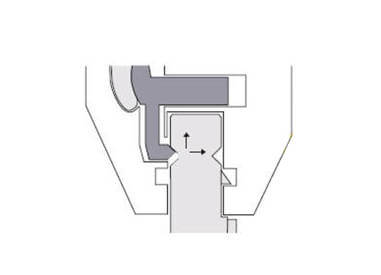
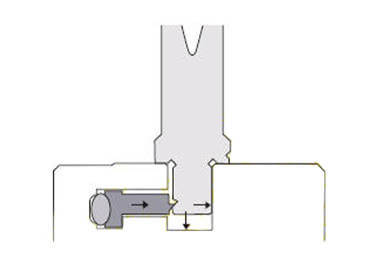
Heavy machinery compensation workbench
For the bending of medium and thick plates, WILA's new standard high-end heavy-duty mechanical compensation workbench can not only easily meet the load-bearing requirements, but also compensate for the deflection deformation of the bending machine. Its model is NSCR-HD-II-HC-150/250-CNC/UPB, and its appearance and size are shown in the figure below.
The only load-bearing mode of WILA heavy-duty upper hydraulic clamp is shoulder load, and its maximum shoulder load is 800t/m, which is completely suitable for heavy-duty load applications of medium and thick plate bending. Even for heavy-duty bending of medium and thick plates, the WILA mechanical compensation curve is still designed one-to-one according to the parameters of the bending machine to compensate for the entire deflection deformation of the bending machine, and it is unique. The mechanical compensation workbench adopts hydraulic clamping, with a surface accuracy of up to ±0.01mm, a Rockwell hardness of 56~60HRC, and a hardening depth of up to 4mm. The mechanical compensation workbench adopts WILA's universal UPB installation interface, which is easy to install and has higher precision. It also has built-in adjustment in the Tx and Ty directions, which can ensure that the workbench and the back gauge remain parallel in the front and back directions, and can correct local angular deviations.
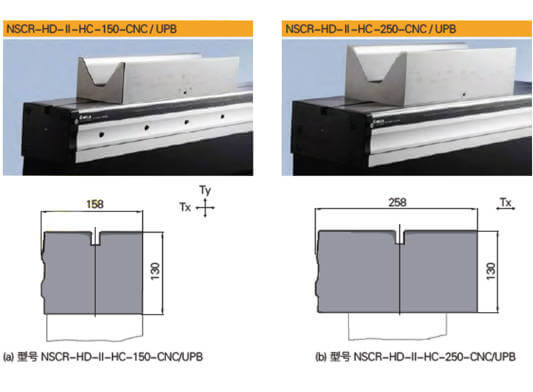
Heavy duty bending tool
Due to the thickness of the plate, the lower die with a larger opening size (V24~V300) and a die with a greater load-bearing capacity are generally selected for medium and thick plate bending. The outer dimensions of the die are generally large, and the weight of the die exceeds the normal handling capacity of the operator. With the help of roller bearings, WILA's patented technology E2M (Easy to Move) allows operators to move heavy bending dies conveniently, safely and quickly, greatly saving the time of changing dies and adjusting machines. WILA can provide bending dies with various knife types and lower die openings to meet customer needs, such as straight knives, gooseneck knives, rounded corner dies and Multi-V dies. Through precision grinding of key parts, the dimensional accuracy of the die is as high as ±0.01mm. Through the treatment of CNC deep quenching hardening technology, the die hardness can reach 56~60HRC, and the depth of the hardened layer is up to 4mm. Strict tolerance requirements and hardening treatment ensure ultra-high precision bending and ultra-long service life. Commonly used heavy-duty molds are shown in Figure 5. BIU-038 can carry a maximum load of 225t/m and can be configured with E2M function; OZU-HD-376 can carry a maximum load of 350t/m and can be configured with E2M function.
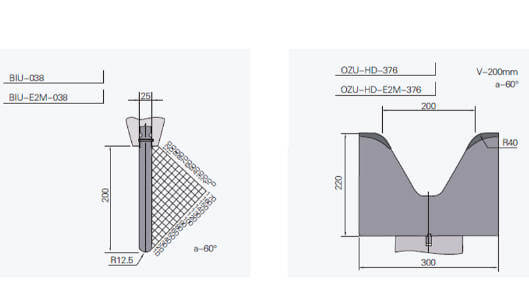
For bending medium and thick plates of different plate thicknesses, WILA also provides Multi-V dies, which are available in two forms: automatic adjustable V-mouth and manual adjustable V-mouth, as shown in Figure 6. Through the CNC motor or adjustment block, the V opening size of the lower die can be adjusted arbitrarily according to the characteristics of the plate, which is particularly suitable for bending medium and thick plates with high rebound and high strength. At the same time, the Multi-V die comes with hardened rollers with low friction coefficient, which can greatly reduce the external creases of the bent parts, and can reduce the bending force by 10%~30% compared with the traditional lower die.
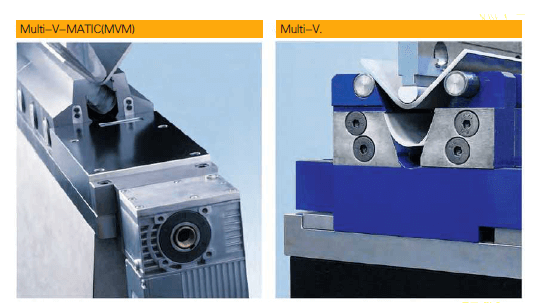
Efficient solutions for bending medium and thick plates
The following figure shows WILA's complete high-efficiency solution for medium and thick plate bending, which mainly consists of a heavy-duty upper hydraulic clamp for the bending machine, a heavy-duty mechanical compensation workbench, a heavy-duty bending mold, and an efficient mold station. The detailed functions of each component are as follows.
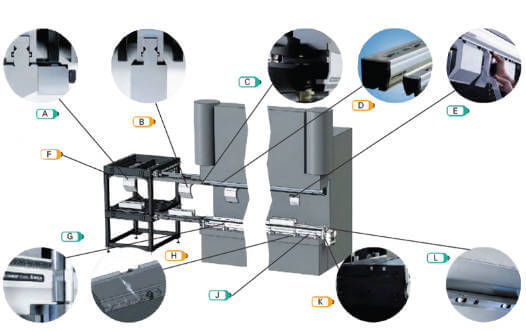
A: The large gooseneck scimitar of the new standard high version has an additional rolling bearing, which allows safer and more convenient mold replacement.
B: Heavy-duty molds (with E2M) can be moved easily, safely and quickly by roller bearings, greatly saving mold change and machine adjustment time.
C: E2M protective end cover, this end cover has a locking structure to ensure that when the clamp is loosened and the mold's safety button is not pressed, the mold will not slide out of the left or right side of the clamp.
D: Heavy-duty upper hydraulic clamp NSCL-HD-II-HC/UPB adopts the universal UPB installation form to safely and quickly install and clamp the mold.
E: Heavy duty upper hydraulic clamps can be used with all new standard high configuration upper molds of WILA.
F: Efficient tooling station for safe storage and replacement of heavy bending tools.
G: Pillars, which can be used to support wider and heavier lower dies, thereby increasing die stability during the bending process.
H: The Tx adjustment function of the mechanical compensation workbench can achieve a higher degree of parallelism between the bending center line and the back gauge.
J: Heavy-duty mechanical compensation table NSCR-HD-II-HC-CNCE2M-250/UPB, adopts the universal UPB installation form, safe and fast installation and adjustment, and can be used with all WILA new standard high-profile lower molds.
K: The protective end cover of the mechanical compensation table prevents the mold from colliding with the fixture when loading the mold horizontally.
L: WILA's patented technology E2M, with roller bearings at the bottom of the mold, allows operators to move heavy molds conveniently, safely and quickly.
Having said so much about WILA's efficient solutions for medium and thick plate bending, I would like to recommend the DURMAPRESS press brake equipped with WILA hydraulic clamps! The following picture is its detailed picture. Welcome to order from DURMAPRESS!
.jpg)
.jpg)
О нас
Durmapress специализируется на проектировании, производстве и продаже различного металлообрабатывающего оборудования, включая гибочные станки, ножницы, пуансоны, станки для лазерной резки и т. д. Компания была основана в 2000 году. Благодаря многолетнему опыту и накоплению технологий. DurmaPress стал одним из известных брендов металлообрабатывающего машиностроения Китая.
Свяжитесь с нами
Последние сообщения
Категории
Следуйте за нами
Еженедельное новое видео
Свяжитесь с нами для получения дополнительной информации
Если у вас есть какая-либо информация о нашей продукции, пожалуйста, свяжитесь с нами, и мы ответим вам в течение 24 часов.
